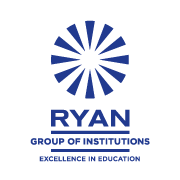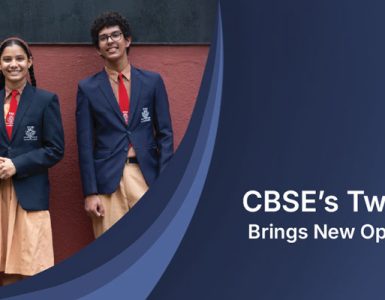In todays world driven by technology kids and teenagers are surrounded by an amount of information. The rise of media and the internet has expanded the reach of information sharing beyond channels highlighting the importance of critical media literacy, for young people.. What does “critical media literacy” really mean? Essentially it involves being able to judge the trustworthiness and credibility of media sources distinguishing between facts and misinformation or biased content.
Why is this skill crucial in the era? The key lies in the abundance and easy access to information. Students are constantly exposed to a variety of content ranging from news articles and blogs to media posts and ads. Without the capability to assess the reliability and source of this information there’s a risk that they may accept misleading content as truth. This not shapes their perspectives. Also influences their decisions, attitudes and beliefs.
Parents and teachers play a role in developing this skill. By prompting students to ask questions like “Who created this content?” “What is the purpose, behind this message?”. Which perspectives are included or left out?” we help them become discerning consumers of media.
This method of questioning serves not to assess content but also equips individuals, with the necessary skills to navigate the ever evolving landscape of media.
Engaging students in conversations about the media they interact with fosters a culture of curiosity and critical thinking, which’re foundations. Such discussions can begin with questions about their preferred websites or YouTube channels gradually progressing into analysis and introspection.
The Role of Parents and Educators
In this era filled with sources of information parents and educators face a unique challenge. They must actively guide minds through the complexities of the media world. How can they effectively instill media literacy in children?
The key lies in promoting dialogue and active participation. Media related conversations should not be background chatter but integral aspects of educational and domestic settings. For instance discussing events during meals or jointly examining media posts can stimulate critical thinking and analysis. These dialogues encourage students to express their viewpoints and question the media they engage with fostering a mindset of skepticism and inquiry.
Integrating media literacy, into the curriculum is another measure.
Teachers have the opportunity to enhance students learning by using real life examples to teach them how to spot bias identify propaganda and grasp the political contexts of media creation. This approach not enriches their journey but also equips them with essential skills, for navigating the complexities of the digital era.
Furthermore parents play a role in setting an example. By showing their children how to critically assess media in their lives they can help instill these practices from an early age. One effective method is engaging in conversations about why advertisementsre created or evaluating the credibility of news sources.
Renowned educational reformer John Dewey aptly stated, “Education is not about acquiring knowledge but about developing critical thinking skills.” This quote underscores the significance of media literacy. Fostering a mindset that extends beyond classrooms into all aspects of life.
Being discerning consumers of media involves more than detecting falsehoods; it requires understanding the nature of truth in todays digital landscape. By imparting these skills to students, parents and educators not safeguard them from misinformation but also empower them to actively engage in democratic societies.
As we contemplate our media consumption behaviors it’s essential to question; Are we, as adults demonstrating the critical thinking abilities that we aim to instill in our children?
This inquiry acts as a nudge, towards the effort needed to nurture well informed, analytical and reflective future members of society.
Methods and Tools for Assessing Media
In a time where information’s readily available at our fingertips the skill of evaluating media content holds immense importance. How can students, who may lack experience in deciphering the intricacies of content navigate this landscape? The solution lies in providing them with the tools and techniques to question, scrutinize and assess the media they engage with on a basis.
Above all else understanding the origin of information is crucial. Encouraging students to delve into the authors background the reputation of the publication and the intent behind the source can illuminate any biases or motives. This approach aids in distinguishing information from partial content. A straightforward yet impactful strategy is employing the SIFT method; Stop, Investigate the source Find coverage and Trace claims, quotes and media back to their context. This method promotes a pause and reflect mentality that encourages students to delve into information before accepting it without question.
Furthermore cross checking information, from sources can significantly boost media literacy. This tactic enables students to compare how different platforms report on a subject matter while highlighting any discrepancies or predispositions.
Engaging in this practice promotes a rounded grasp of subjects encouraging a viewpoint.
One effective method to introduce these ideas is, through classroom activities or family conversations centered around analyzing events or popular media content. For example choosing a news article and examining it in terms of credibility, bias and evidence can make abstract concepts more tangible. These activities not enhance learning by making it interactive. Also emphasize the importance of critical thinking skills.
Surprisingly research by the Stanford History Education Group revealed that many students struggle to differentiate between a news story and an advertisement online. This finding highlights the need for education on media literacy skills. By educating students about these challenges and providing them with the tools to navigate them effectively we are preparing them for a future as informed members of society.
Solutions
The digital era presents both opportunities and obstacles; while it grants us access to information it also brings about issues, like information overload and the prevalence of echo chambers. These hurdles can hinder students ability to critically assess media content distorting their perception of reality.
Information Overload; The digital age has ushered in an abundance of information.
Students face an influx of data, news and content which can make it difficult to determine what is truly important or trustworthy. This information overload can overwhelm the mind and hinder decision making abilities.
To address this issue teaching students how to prioritize information based on its significance and credibility can help alleviate the impact of information overload. By using methods, like the SIFT technique students can learn to evaluate informations worth and decide if it requires exploration.
Social media algorithms often create echo chambers where users are exposed to viewpoints that align with their beliefs. This limited exposure to perspectives can hinder thinking skills and contribute to polarization.
To combat this phenomenon it is important to encourage students to seek out a variety of sources for information. Introducing them to media outlets, with varying viewpoints and guiding them through comparing and contrasting content can broaden their perspectives. Classroom discussions that present sides of an issue can also help dismantle these echo chambers.
Bringing real world examples into the curriculum helps make these concepts more relatable. For instance examining cases of misinformation campaigns or analyzing how different news sources cover the same event can offer insights into overcoming these obstacles.
Lets ponder on this thought; Think back, to the issue you came across online. Did you actively explore viewpoints from sources. Did you find yourself surrounded by like minded opinions? Reflecting on this can shed light on our media consumption habits and inherent biases.
Navigating Media Literacy Moving Forward
As we navigate the complexities of the era the road ahead for enhancing media literacy presents both challenges and opportunities. The digital landscape is constantly evolving, introducing forms of media and information at a pace. Adapting to this transformation requires us to approach media literacy with flexibility and foresight. So what does this mean for parents, educators and students?
To start with it entails recognizing that media literacy is not a one time lesson but an ongoing educational journey. With every advancement in technology and new platforms emerging fresh hurdles in distinguishing information also arise. This highlights the significance of staying informed and adaptable continuously honing our skills and tactics to keep up with advancements.
Furthermore the future of media literacy hinges on collaboration. Parents and educators should collaborate to convey a message, about the importance of evaluating media thoughtfully.
Partnerships, between policymakers and tech companies are crucial in shaping the landscape. Initiatives promoting transparency, accountability and education play a role in fostering a informed and discerning society.
Embracing media literacy involves recognizing the aspects of media alongside the challenges. While we often focus on the risks digital platforms offer opportunities for learning, connecting and expressing creativity. Teaching students to use media and critically can help them harness these benefits while being aware of dangers.
As we embrace learning lets think about what actions we can take to improve our media literacy and prepare for future digital complexities. Whether its diversifying our news sources attending media literacy events or being more mindful of our media consumption habits small steps can lead to progress in navigating the world.
In todays age critical media literacy demands vigilance, adaptability and collaboration among all parties. By committing to learning and development we empower ourselves and future generations to engage with content thoughtfully and responsibly rather, than just passively or critically.




